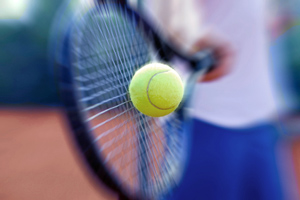I love this time of year. Spring is around the corner and we are getting more sun! The weather is starting to warm up and with winter ending, the new season of spring sports is starting. It makes for a fun time in the clinic with all our high school and middle school athletes excited about transitioning sports, going from the gym to the outdoors. But sadly part of this spring tradition has had a slight change recently. Often this time of the year is no longer energized with the start of a new sports season but replaced with the rush from transitioning from winter league into spring league of the exact same sport. Instead of kids chomping at the bit to start the sport they have been away from for almost a year they are more concerned about trying to fix injuries they acquired during the winter and make the same team this spring. Instead of saying goodbye to basketball and hello to baseball, its goodbye to indoor soccer and hello outdoor soccer.
One of the most common injuries we see in the clinic these days are an array of overuse injuries. This could be anywhere from rotator cuff tendinitis for a throwing athlete, to Achilles tendinitis for a soccer player. Often when talking with the athletes and their parents I am asked the question of why they have developed this pain in their ankle/shoulder/back? They don’t understand how this could have happened because they have not changed anything to their routine so what could have possibly caused this issue? This is exactly where the problem is… they have not changed anything! Our bodies are the best machine ever invented. No machine comes close to the durability that our bodies have. We can adapt to excessive loading with weights and get stronger, it adapts to strenuous activity and increases cardiac endurance. It is absolutely amazing what our bodies can tolerate. The one thing that our body does not adapt well to is repetitive activity. It is meant to constantly adapt to change and adapt to that change quickly. When we expose our bones, joints, and muscles to the same exact activity repeatedly, it slowly wears down. This is the problem with sports specialization. With sports that last through the year, we are not changing the challenges to the body, and thus creating these overuse injuries.
The biggest argument for sports specialization is the 10,000-hour theory. For those of you that aren’t familiar with this, it is the idea that it takes 10,000 hours to become an expert at a particular activity. For example, Beethoven was obsessed with music as a child and often spent 10 hours a day with music accumulating 10,000 hours before he was 18 years old. Not only was he gifted but this dedication and time led to his masterpieces. I love the idea of this and the work ethic it promotes but there are a couple of things that cause this theory to translate poorly to sports. First, this theory works very well for intellectual tasks because other than mental fatigue there are no overuse injuries of the brain. Second, it works well for broad tasks like learning music which allows for variation within the task, whereas translating it to one sport is too specific and doesn’t allow for enough variation.
This second limitation I think is the solution to this problem. Variation is key. Instead of applying the 10,000-hour theory to baseball apply it to sports in general. Don’t worry about developing the skills to be an amazing soccer player, develop the skills to become an amazing athlete. Movements and skills from one sport often translate to another sport. Developing the speed and agility on the basketball court can translate very well to improve dribbling in soccer. Improving your hand-eye coordination while using a lacrosse stick will improve your catching ability in baseball. Every year trackingfootball.com breaks down the players of both NFL teams in the Super Bowl into two groups. One group of players that were single sport athletes in high school, and the second group of players that were multi-sport athletes in high school. Consistently the number of multi-sport athletes in this survey is above 90%! Being a multi-sport athlete doesn’t limit you, it helps make players the best in their field!
In my opinion, playing multiple sports not only prevents these injuries but also produces better athletes. So please let’s make this year the year that we switch sports, instead of just switching seasons.



